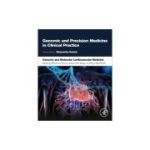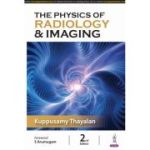Genesis, Pathophysiology and Management of Venous and Lymphatic Disorders

DESCRIPTION
Genesis, Pathophysiology Management of Venous Diseases is the must-have resource on venous disease. The book bridges the gap between basic science and clinical medicine, covering the history of venous surgery, the lymphatic system and anatomy, pathophysiology of various venous disease, etiology, clinical manifestations and diagnosis, management, and medical and surgical treatment options. It also places attention on genetic studies and pharmacological analysis of various anticoagulants which are widely used in treating venous diseases and deep vein thrombosis and highlights the importance of microscopic venous valves and their pathology in both normal and disease condition. The breadth of topics covered makes this reference suitable for a range of professionals in phlebolymphology and cardiology, including medical students, practicing clinicians, surgeons, researchers, radiologists, bioengineers, and more.
- Provides complete, up-to-date developments in the field of phlebolymphology, including the history of venous surgery, lymphatic system and anatomy, pathophysiology of various venous disease, and more
- Includes new etiological and pathophysiological concepts and the latest outlooks and trends in the management of CVD
- Written in an easy-to-read manner, the book includes tables, figures, clinical photographs and medical illustrations to aid understanding
Table of Contents
- Cover image
- Title page
- Table of Contents
- Copyright
- Dedication
- Epigraph
- About the author
- Foreword
- Preface
- Acknowledgments
- Abbreviations
- Chapter 1. The lymphovenous system
- Abstract
- 1. 1 Embryological considerations
- 1. 2 Vascular network development in animal models
- 1. 3 Angiogenesis
- 1. 4 Sprouting angiogenesis
- Chapter 2. Lymphangiogenesis
- Abstract
- 2. 1 Lymph vessel formation and physiology
- 2. 2 Organization and anatomy of the lymphatic system
- 2. 3 General initial lymphatic structure
- 2. 4 Precollector structure
- 2. 5 General collecting lymphatic structure
- 2. 6 Immunological markers of lymphatic endothelium
- 2. 7 Lymphatic networks in different organ systems
- 2. 8 Development of lymphatic vessel networks
- 2. 9 Origination of lymphatic endothelial cell
- 2. 10 Specification and migration of lymphatic endothelial cells
- 2. 11 Maturation of lymphatic vasculature and smooth muscle cell recruitment
- 2. 12 Lymphatic valve formation
- 2. 13 Lymphovenous valves
- 2. 14 Lymphatic development and diseases
- 2. 15 Lymphangiogenesis and relationships with angiogenesis during microvascular network remodeling
- 2. 16 Lymphangiogenesis
- 2. 17 Relationships between lymphangiogenesis and angiogenesis
- 2. 18 Lymphangions and the lymphatic pump mechanism
- 2. 19 Lymphatic smooth muscle
- 2. 20 Filtration at lymph nodes
- 2. 21 Lymphedema
- 2. 22 Obesity, lymphatics, and lymphedema
- 2. 23 Gastrointestinal lymphatics and inflammation
- 2. 24 New directions: microparticles, nanoparticles, and immunotherapy
- Chapter 3. Lymphatic system of the lower limb
- Abstract
- 3. 1 Importance of the lymphatic system
- 3. 2 Structure of lymphatic vessels
- 3. 3 Importance of the lymphatic system in maintaining fluid balance
- 3. 4 General principles of tissue fluid formation
- 3. 5 Generalized edema
- 3. 6 Precipitating factors for edema
- 3. 7 Lymphedema
- Chapter 4. Diseases of the venous system
- Abstract
- 4. 1 Venous diseases of the lower limb
- 4. 2 Anatomy
- 4. 3 The superficial venous system
- 4. 4 The deep venous system
- 4. 5 Structure of microcirculation
- 4. 6 Arterioles
- 4. 7 Capillaries
- 4. 8 Venules
- 4. 9 Lymphatic vessels
- 4. 10 Valves in veins
- 4. 11 Comments
- Chapter 5. The pathophysiology of varicose veins of the lower limb
- Abstract
- 5. 1 Biophysics
- 5. 2 Cellular changes
- 5. 3 Chronic venous disease: from symptoms to microcirculation
- 5. 4 Significance of symptoms and how they influence the choice of investigation
- 5. 5 Different microcirculatory patterns in symptomatic versus asymptomatic patients
- 5. 6 Choosing the right veno-active drug for the right patient
- 5. 7 From the first symptoms to the advanced stages: chronic venous disease progression
- 5. 8 Role of TGF-β1 in vascular wall pathology
- 5. 9 Role of mitogen-activated protein kinase (ERK1/2) in venous reflux in patients with chronic venous disorder
- 5. 10 Human venous valve disease caused by mutations in FOXC2 and GJC2
- 5. 11 FOXC2, GJC2, and GFA1 mutations in human venous valve disease
- 5. 12 Pathophysiological mechanisms of chronic venous disease and implications for veno-active drug therapy
- 5. 13 Pathophysiology of chronic venous disease
- 5. 14 Genetic biases related to chronic venous ulceration
- 5. 15 Gene expression of the epidermal wound bed
- 5. 16 Gene expression of the dermal wound bed
- 5. 17 Gene polymorphism in chronic venous ulcer
- 5. 18 Epidemiology
- Chapter 6. Etiology of varicose veins
- Abstract
- 6. 1 Genetic associations
- 6. 2 Primary changes in the vein walls/valves
- 6. 3 Normal structure of veins
- 6. 4 Extracellular matrix degradation
- 6. 5 Enzymatic dysregulation
- 6. 6 Activation of endothelium
- 6. 7 Smooth muscle cell proliferation and migration
- 6. 8 Dysregulated SMC apoptosis
- Chapter 7. Clinical manifestations
- Abstract
- 7. 1 Clinical complications
- 7. 2 Evaluation of patients
- 7. 3 Investigations
- Chapter 8. Staging of chronic venous disease
- Abstract
- 8. 1 Development of the classification of chronic venous disease for proper evaluation
- 8. 2 The revised CEAP classification: summary
- 8. 3 Pathophysiologic classification
- 8. 4 Comment
- 8. 5 Terminology and new definitions in CVD
- Chapter 9. Management
- Abstract
- 9. 1 The nature of the disease
- 9. 2 The stage of the disease
- 9. 3 The type of problem
- 9. 4 Management of congenital venous disorders
- 9. 5 Management of primary varicose veins
- 9. 6 Conservative management
- 9. 7 Calcium dobesilate
- 9. 8 Micronized purified flavonoid fraction (Daflon)
- 9. 9 Rutosides
- 9. 10 Sulodexide
- 9. 11 Implications for treatment
- 9. 12 Compression bandages
- 9. 13 Surgical management
- Chapter 10. History of the surgical management of varicose veins
- Abstract
- 10. 1 Introduction
- 10. 2 Egypt
- 10. 3 Greece
- 10. 4 Rome
- 10. 5 Arabia
- 10. 6 The era of barber surgeons
- 10. 7 The Renaissance
- 10. 8 The era of sclerotherapy
- 10. 9 Back to invasive procedures
- 10. 10 Comments
- Chapter 11. Contemporary surgical procedures
- Abstract
- 11. 1 Open/operative procedures
- 11. 2 Closed/minimally invasive/endovenous procedures
- 11. 3 Trendenlenburg’s operation
- 11. 4 Procedure in brief
- 11. 5 Tributaries ligated in the procedure
- 11. 6 Risk factors
- 11. 7 Trendelenburg operation
- 11. 8 Complications
- 11. 9 Excision of the short saphenous vein
- 11. 10 Varicose vein stripping with conventional ligation
- 11. 11 Technique of stripping of LSV
- 11. 12 Modified vein-stripping technique
- 11. 13 Common side effects of vein ligation and stripping
- 11. 14 Microphlebectomy
- 11. 15 The basic steps of the microphlebectomy procedure
- 11. 16 The benefits and expected results
- 11. 17 Transilluminated powered phlebectomy
- 11. 18 Risks
- 11. 19 Normal results
- 11. 20 Morbidity and mortality rates
- Chapter 12. Endovenous laser treatment
- Abstract
- 12. 1 Introduction
- 12. 2 Evolution of endovenous laser technology
- 12. 3 Endovenous laser ablation
- Chapter 13. Radiofrequency ablation
- Abstract
- 13. 1 Endovenous radiofrequency ablation for the treatment of varicose veins
- 13. 2 Latest medical devices used in radiofrequency ablation
- 13. 3 ClariVein
- 13. 4 Cryostripping
- 13. 5 The evolution of varicose vein treatment: from 19th century ligation to noninvasive therapy (cyanoacrylate glue)
- 13. 6 Subfascial endoscopic perforator surgery in perforator vein insufficiency
- Chapter 14. Sclerotherapy
- Abstract
- 14. 1 Introduction
- 14. 2 Definition
- 14. 3 Evolution of the methodology of sclerotherapy
- 14. 4 Principles of sclerotherapy
- 14. 5 Sclerosant drugs
- 14. 6 Historical evolution of sclerosing agents
- 14. 7 Hypertonic saline
- 14. 8 Sodium tetradecyl sulfate
- 14. 9 Polidocanol
- 14. 10 Chromated glycerine (Sclermo)
- 14. 11 Planning for surgery
- 14. 12 Preparation of the patient
- 14. 13 Materials for the procedure
- 14. 14 Technique
- 14. 15 Retreatment
- 14. 16 Complications
- 14. 17 Follow-up
- 14. 18 Ultrasound-guided sclerotherapy and endovenous videoscopic sclerotherapy
- 14. 19 Comments
- 14. 20 Other sclerotherapy indications
- Chapter 15. Modified microfoam sclerotherapy
- Abstract
- 15. 1 Acute complications related to small veins
- 15. 2 Relevance of the size of veins in chronic venous disease
- 15. 3 Nonreturn valves
- 15. 4 The junctional valves and perforators
- 15. 5 Relevance of microscopic veins
- 15. 6 Modified microfoam sclerotherapy—principle
- Chapter 16. Deep vein thrombosis
- Abstract
- 16. 1 Introduction
- 16. 2 Epidemiology
- 16. 3 Pathogenesis
- 16. 4 Symptoms
- 16. 5 Signs
- 16. 6 Wells clinical score for deep vein thrombosis
- 16. 7 Predisposing factors
- 16. 8 Other provoking risk factors
- 16. 9 Complications
- 16. 10 Investigations
- 16. 11 Differential diagnosis
- 16. 12 Treatment
- 16. 13 Anticoagulation therapy (thrombolysis)
- 16. 14 Venous thromboembolism and management in special populations
- 16. 15 Management of venous thromboembolism in surgical patients
- 16. 16 Diagnosis of pulmonary embolism in pregnancy
- 16. 17 Intrapartum management
- 16. 18 Venous thromboembolism in cancer
- 16. 19 Management of upper extremity deep vein thrombosis
- 16. 20 Thrombolytic therapy for deep vein thrombosis
- 16. 21 Surgery for deep vein thrombosis
- 16. 22 Lifestyle
- Chapter 17. Anticoagulation in the prevention and treatment of venous thromboembolism
- Abstract
- 17. 1 Introduction
- 17. 2 Problems caused by venous thromboembolism
- 17. 3 Pathophysiology
- 17. 4 Role of blood vessels
- 17. 5 Role of platelets
- 17. 6 Role of the coagulation system
- 17. 7 Alteration of blood flow
- 17. 8 Anticoagulants
- 17. 9 Selection of anticoagulant
- 17. 10 Mechanisms of anticoagulation
- 17. 11 Dabigatran: pharmacological analysis
- 17. 12 Apixaban: pharmacological analysis
- 17. 13 Deep vein thrombosis/pulmonary embolism management with rivaroxaban (Xalerto)
- 17. 14 Precautions
- 17. 15 Laboratory testing to be done prior to starting rivaroxaban
- 17. 16 Rivaroxaban: an oral direct FXa inhibitor
- 17. 17 Rivaroxaban in acute coronary syndrome
- 17. 18 Rivaroxaban for stroke prophylaxis in nonvalvular atrial fibrillation
- 17. 19 Rivaroxaban: and then there were three
- 17. 20 Fondaparinux
- 17. 21 Fondaparinux: advantages
- 17. 22 Abdominal surgery
- 17. 23 Edoxaban
- Chapter 18. Chronic venous ulcer
- Abstract
- 18. 1 Etiopathogenesis
- 18. 2 Harmful coexisting conditions
- 18. 3 Management
- 18. 4 Care of the ulcer
- 18. 5 Leech therapy
- 18. 6 Collaspread
- 18. 7 Hydrogel (colloidal silver gel)
- 18. 8 Recombinant activated platelet factor (Regranex, Plermin)
- 18. 9 Submucosa wound matrix
- 18. 10 Maggot therapy
- 18. 11 Skin grafting
- Chapter 19. The morbid varicose vein
- Abstract
- 19. 1 Introduction
- 19. 2 Materials and methods
- 19. 3 Pathogenesis of varicose veins
- 19. 4 The venous valves and venous plethora
- 19. 5 The different types of varicosities
- 19. 6 Pathogenesis
- 19. 7 Pathogenesis of varicose veins
- 19. 8 Pathophysiology at the level of the cellular microcirculation
- 19. 9 Conclusion
- Chapter 20. Photographic presentation of venous diseases
- Abstract
- 20. 1 Congenital venous malformations
- 20. 2 Primary varicose veins
- 20. 3 Maggots
- 20. 4 Recurrence after surgery
- 20. 5 Elephantoid change
- 20. 6 Bleeding
- 20. 7 Thrombophlebitis
- 20. 8 Cellulitis
- 20. 9 Postcellulitis
- 20. 10 Healing and healed ulceration
- 20. 11 Immediate effects of sclerotherapy
- 20. 12 Late effect of sclerotherapy
- 20. 13 Lipodermatosclerosis
- 20. 14 Atrophie blanche (livedoid vasculopathy)
- 20. 15 Hypertrichiasis
- 20. 16 Varicose veins in the arm
- 20. 17 Morbid vein
- References
- Index
Book categories
-Special order
-Publishers
-Promo
-Callisto Publications
-New books
-- 787,50 lei
- 1197,00 leiMRP: 1260,00 lei
- 189,00 lei
Promotions
-- 1197,00 leiMRP: 1260,00 lei
- 1108,80 leiMRP: 1260,00 lei
- 850,50 leiMRP: 945,00 lei











OUR VISITORS OPINIONS